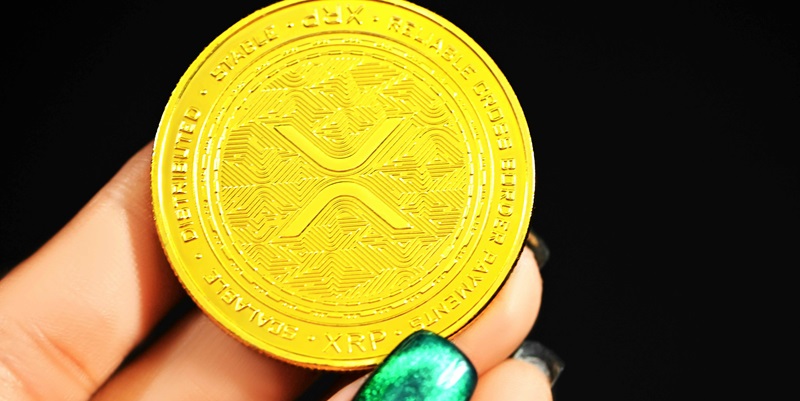In the ever-evolving world of cryptocurrencies, the recent surge in XRP, the digital asset backed by Ripple, has captured significant attention. Over the past two weeks, XRP has experienced a dramatic 40 percent increase in price, reaching approximately 60 cents. This substantial upward movement has rejuvenated interest among investors in the altcoin sector, particularly those involved with XRP, Solana (SOL), and Dogecoin (DOGE). The catalyst for this heightened interest appears to be the recent approval of spot Ethereum ETFs by U.S. regulators, which has led to speculation about other projects that could follow in Ethereum’s footsteps and achieve major success. This article explores the recent developments surrounding XRP, providing insights into its heightened demand, Ripple’s strategic initiatives, and the influence of its legal challenges on its market position.
Increased Demand and Whale Activity
A prominent theme in the recent surge of XRP is the increased demand for the cryptocurrency. On-chain data from Santiment indicates that XRP whales have been actively accumulating the asset. Last week alone, these large-scale investors purchased over 140 million units of XRP, valued at approximately $84 million. This accumulation involved significant transactions, including the movement of substantial amounts of XRP from major exchanges such as Binance. Such transactions suggest a decline in the centralized exchange supply of XRP, despite Ripple’s monthly sales. The behavior of these whales underscores confidence in the asset’s potential and reflects a growing interest in decentralized finance options.
Interestingly, the whale activity coincides with broader market dynamics. Large-scale investors often have access to detailed market insights and insider information, making their moves a crucial indicator of potential future trends. This enhanced demand is not isolated but part of a broader pattern involving other altcoins like Solana and Dogecoin. The approval of spot Ethereum ETFs in the United States has created a ripple effect, spurring bullish sentiment across the cryptocurrency market and fostering speculation about which projects will emerge as significant players. This environment has primed XRP for its recent rally, driving both retail and institutional interest in this digital asset.
Ripple’s Strategic Efforts for Liquidity and Adoption
Ripple’s strategic initiatives have been pivotal in enhancing XRP’s liquidity and fostering its global adoption. One of the most significant developments is the creation of essential infrastructure to support XRP’s multifaceted use cases. This includes the XRPL EVM sidechain, which is designed to facilitate multichain web3 development. Additionally, Ripple has launched an automated market maker (AMM) and a native decentralized exchange (DEX), both of which aim to broaden XRP’s adoption by providing efficient liquidity solutions. These innovations are crucial for integrating XRP into various blockchain environments, thereby extending its utility beyond traditional payment systems.
In an ambitious move aimed at solidifying its leadership in cross-border payments, Ripple is also planning to introduce a stablecoin backed by the U.S. dollar. This stablecoin will be available on both the XRPL and Ethereum networks, further showcasing Ripple’s commitment to creating a versatile and interoperable financial ecosystem. These efforts not only underscore the company’s dedication to expanding XRP’s reach but also mark significant steps toward mainstream adoption. By developing robust infrastructure and pioneering new financial products, Ripple is positioning XRP to be a cornerstone of the global cryptocurrency market, enhancing its liquidity and practical applications.
Legal Implications and Market Dynamics
Ripple’s strategic moves have been instrumental in boosting XRP’s liquidity and encouraging its global adoption. A key advancement is the establishment of critical infrastructure to support XRP’s diverse use cases, notably the XRPL EVM sidechain, aimed at facilitating multichain web3 development. Ripple has also introduced an automated market maker (AMM) and a native decentralized exchange (DEX). These initiatives are designed to expand XRP’s adoption by offering efficient liquidity solutions, crucial for embedding XRP into various blockchain ecosystems and extending its utility beyond conventional payment methods.
In a bold effort to cement its dominance in cross-border transactions, Ripple plans to launch a U.S. dollar-backed stablecoin, available on both the XRPL and Ethereum networks. This initiative highlights Ripple’s commitment to developing a versatile and interoperable financial ecosystem. These endeavors not only emphasize the company’s dedication to extending XRP’s reach but also represent significant steps toward mainstream acceptance. By building robust infrastructure and introducing innovative financial products, Ripple aims to position XRP as a fundamental asset in the global cryptocurrency market, enhancing its liquidity and practical uses.

